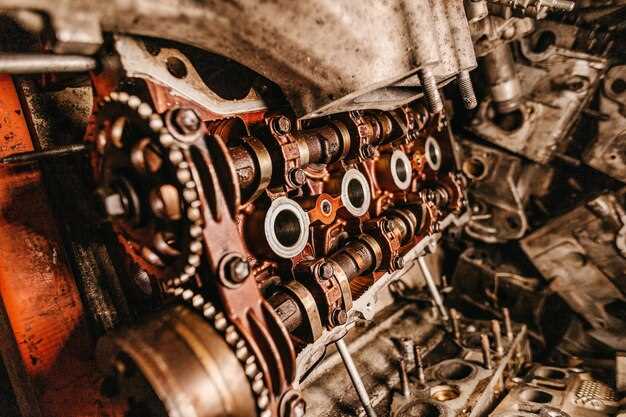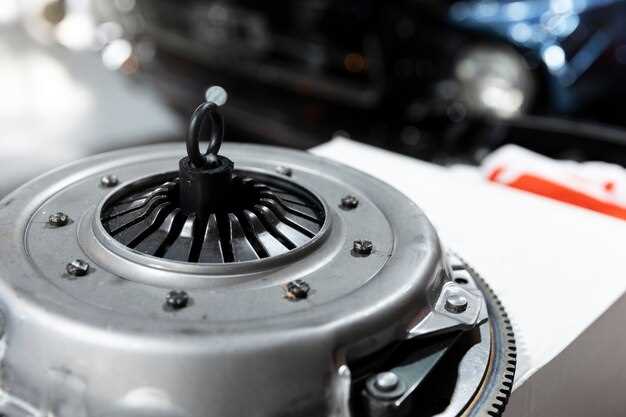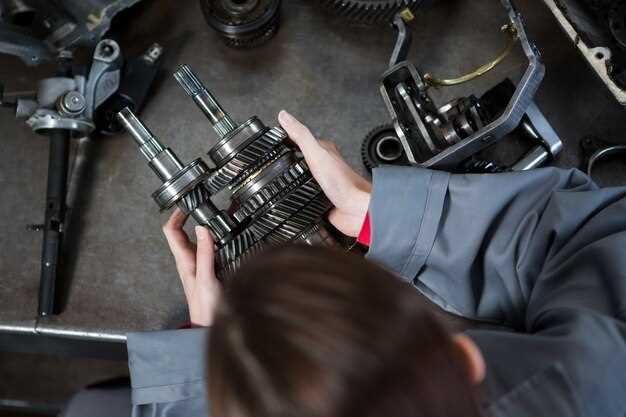
In the competitive world of automotive performance, camshaft tuning stands out as a pivotal technique for maximizing engine power and efficiency. The camshaft plays a critical role in controlling the timing and duration of valve openings, significantly influencing the engine’s ability to breathe and generate power. By fine-tuning the camshaft, enthusiasts and engineers can unleash considerable gains in performance, tailoring the engine’s characteristics to a specific driving style or application.
Understanding the various camshaft tuning techniques is essential for anyone looking to enhance their engine’s capabilities. From modifying lift and duration to adjusting lobe separation angles, each technique offers unique benefits and challenges. For instance, increasing lift can enhance airflow and power at high RPMs, while altering the timing can improve torque delivery across the power band, resulting in a more responsive engine.
This article delves into the fundamental aspects of camshaft tuning, providing insights into both the theoretical principles and practical applications. Whether you’re an avid car enthusiast, a professional tuner, or simply curious about how to boost engine performance, this comprehensive guide will equip you with the knowledge needed to make informed modifications and achieve the desired results.
Choosing the Right Camshaft Profile for Your Engine Setup

Selecting the appropriate camshaft profile is crucial for maximizing engine performance. The camshaft determines the timing, duration, and lift of the valves, which directly influences the engine’s air-fuel mixture efficiency and overall power output.
Understand Your Engine’s Purpose: Before choosing a camshaft profile, it’s essential to identify the primary use of your engine. Whether it’s for street driving, racing, or off-road applications will significantly impact your selection. Street engines typically benefit from a profile that balances performance with smooth drivability, while racing engines require profiles that offer maximum power at higher RPMs.
Consider Engine Specifications: Evaluate your engine’s displacement, compression ratio, and existing modifications. A higher compression ratio allows for a more aggressive camshaft profile. Moreover, if your engine has performance enhancements like headers or forced induction, a camshaft with higher lift and longer duration can optimize gains.
Lift and Duration: The lift refers to how far the valves open, while duration is the length of time the valves remain open during the engine’s cycle. Higher lift can enhance airflow, but too much can lead to a loss of low-end torque, which could be undesirable in everyday driving. Longer duration improves top-end power but may sacrifice response at lower RPMs.
Lobe Separation Angle (LSA): The LSA affects the overlap between the intake and exhaust valves. A narrower LSA can improve throttle response and low-end torque, which is beneficial for street performance. Conversely, a wider LSA is typically used for high RPM applications, enhancing peak power but potentially causing a loss in low-end performance.
Testing and Tuning: After selecting a camshaft profile, testing is vital. Dyno testing helps identify the performance curve of the combination, allowing for fine-tuning the engine setup. Adjustments may include modifying the fuel maps or ignition timing to achieve optimal performance with the new camshaft.
In conclusion, choosing the right camshaft profile involves a balanced analysis of your engine’s purpose, specifications, and intended performance characteristics. Careful consideration of these factors can lead to significant improvements in engine power and efficiency.
Tuning Your Valve Timing for Maximum Torque and Horsepower

Valve timing plays a crucial role in optimizing engine performance by controlling when the intake and exhaust valves open and close during the engine cycle. Adjusting valve timing can significantly impact torque and horsepower, making it a vital area for tuning enthusiasts and performance engineers.
The timing of the valve events relative to the position of the piston in the cylinder affects volumetric efficiency. By advancing or retarding the valve events, tuners can enhance air intake and exhaust flow, thereby improving torque and horsepower at specific RPM ranges. For instance, advancing the intake cam timing allows the intake valve to open earlier, which can enhance cylinder filling at low RPMs, providing increased torque. Conversely, retarding the exhaust valve can delay the exit of exhaust gases, increasing the pressure in the cylinder and enhancing turbocharger effectiveness at higher RPMs.
Choosing the right camshaft profile is pivotal for achieving an optimal setup. Shorter duration camshafts tend to improve low-end torque, making them ideal for street applications, while longer duration camshafts are suited for high-RPM performance, providing more horsepower at the upper limits of the engine’s power band. Adjusting the overlap period–the time when both the intake and exhaust valves are open–can also influence engine characteristics; increasing overlap can improve horsepower but may compromise low-end torque.
Variable valve timing (VVT) systems offer sophisticated methods to alter valve timing dynamically based on engine load and speed. By continuously adjusting the timing, VVT systems improve both low-end torque and high-end horsepower across a wider range of engine conditions. Integration of such technology allows for a more flexible engine performance without sacrificing efficiency.
To achieve the best results from tuning valve timing, it is essential to conduct thorough testing and tuning sessions using a dynamometer. Analyzing torque and horsepower curves will help determine the ideal settings for your specific application. Adjustments should be made incrementally, documenting changes and their effects to pinpoint the most effective configuration for maximizing engine performance.
In summary, tuning valve timing is a powerful method for enhancing engine output. By understanding the relationship between valve events and engine dynamics, tuners can strategically adjust timing to achieve significant improvements in both torque and horsepower across desired RPM ranges. Consistent testing and tuning allow for fine-tuning the setup to meet specific performance goals.
Evaluating Lift and Duration Adjustments for Performance Gains
When tuning a camshaft, adjusting the lift and duration of the cam lobes plays a critical role in optimizing engine performance. Both parameters significantly influence the engine’s ability to breathe, which directly affects its power output.
Lift refers to the distance that the valve is opened, while duration measures the time the valve remains open during each engine cycle. Increasing lift allows more air and fuel mixture to enter the combustion chamber, enhancing the engine’s volumetric efficiency. Higher lift specifications can lead to greater power, particularly at higher RPMs, where engines typically benefit from increased airflow.
However, it is essential to find a balance. Excessive lift can cause valve float, premature wear on components, and may require stronger valve springs. Performance gains must be weighed against mechanical limitations and potential reliability issues.
Duration adjustments impact the timing of when the valves open and close relative to the piston’s position. A longer duration can improve power at high RPM but may reduce low-end torque, creating a trade-off often referred to as “power band.” Longer duration angles allow the engine to maintain power in higher RPM ranges, making it suitable for racing applications where maximum output at high speeds is crucial.
However, these adjustments can result in a loss of drivability in street applications, leading to a rough idle and decreased low-end performance. Therefore, understanding the desired application, whether for street or racing, becomes vital in selecting the correct lift and duration settings.
Engine simulations and dyno testing can assist in evaluating the effects of lift and duration modifications. By assessing the airflow characteristics, torque curve, and power output across the RPM band, tuners can make informed decisions about the ideal specifications for their particular setup.
In conclusion, carefully evaluating lift and duration adjustments is essential for achieving targeted performance gains. Attention to the specific needs of the engine, along with thorough testing, allows for optimized tuning that maximizes power while maintaining reliability.

